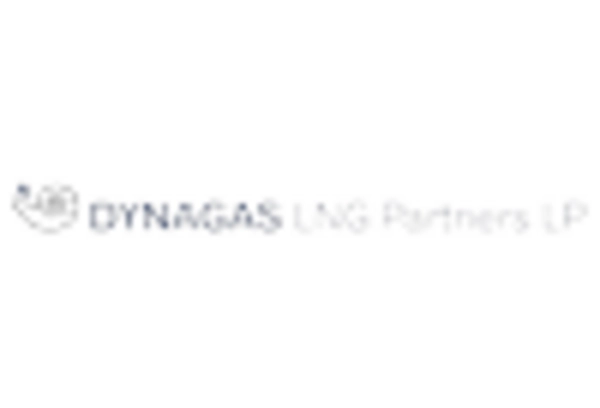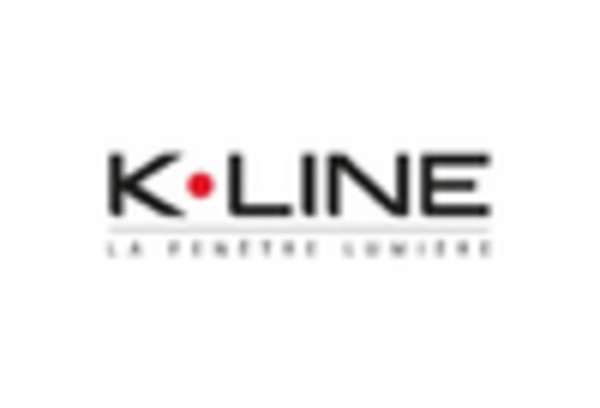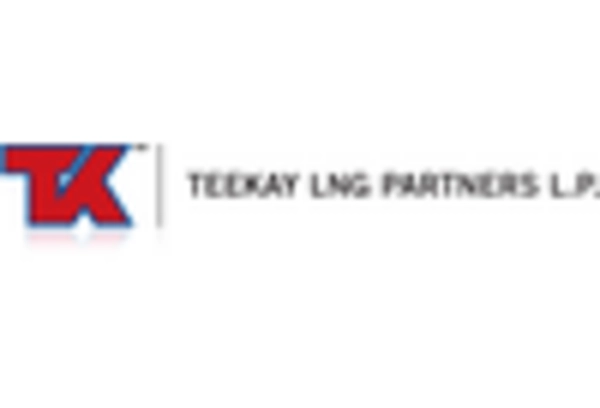Investment in LNG Infrastructure
Investment in LNG infrastructure is a crucial factor propelling the Lng Carriers Market. Governments and private entities are allocating substantial resources to develop LNG terminals, pipelines, and storage facilities. For instance, recent reports indicate that investments in LNG infrastructure could exceed USD 100 billion in the coming years. This influx of capital is likely to enhance the operational capabilities of LNG carriers, enabling them to transport larger volumes of liquefied natural gas more efficiently. As infrastructure improves, the Lng Carriers Market is poised for growth, as enhanced logistics will facilitate increased trade and distribution of LNG.
Increasing Demand for Natural Gas
The rising demand for natural gas as a cleaner alternative to coal and oil is a primary driver in the Lng Carriers Market. Countries are increasingly focusing on reducing carbon emissions, which has led to a shift towards natural gas. According to recent data, the demand for liquefied natural gas is projected to grow at a compound annual growth rate of approximately 5% over the next decade. This trend is likely to stimulate the need for more LNG carriers to transport the gas efficiently across various regions. As nations invest in infrastructure to support LNG imports, the Lng Carriers Market is expected to expand significantly, driven by the necessity to meet this growing demand.
Emerging Markets and Demand Growth
Emerging markets are playing an increasingly pivotal role in the Lng Carriers Market. Countries in Asia and Africa are experiencing rapid industrialization and urbanization, leading to heightened energy needs. For example, nations like India and China are expanding their LNG import capacities to meet growing energy demands. This trend is expected to drive the construction of new LNG carriers, as these countries seek to secure reliable energy sources. The Lng Carriers Market is likely to benefit from this shift, as emerging economies prioritize natural gas to support their development goals and reduce reliance on more polluting energy sources.
Regulatory Support for Cleaner Fuels
Regulatory support for cleaner fuels is a significant driver in the Lng Carriers Market. Governments worldwide are implementing policies that favor the use of natural gas over more polluting fossil fuels. This regulatory environment encourages investments in LNG infrastructure and the development of new LNG carriers. For instance, various countries have established incentives for companies that invest in cleaner energy solutions, which could lead to a surge in LNG carrier orders. As regulations become more stringent regarding emissions, the Lng Carriers Market is expected to expand, driven by the need for compliant and efficient transportation solutions.
Technological Innovations in LNG Carriers
Technological innovations are transforming the Lng Carriers Market, enhancing the efficiency and safety of LNG transportation. Advances in ship design, propulsion systems, and cargo handling technologies are enabling carriers to operate more effectively. For instance, the introduction of membrane tank systems has improved the storage capacity and safety of LNG carriers. These innovations not only reduce operational costs but also minimize environmental impacts, aligning with global sustainability goals. As technology continues to evolve, the Lng Carriers Market is likely to see increased investment in modern vessels, further driving market growth.


















Leave a Comment